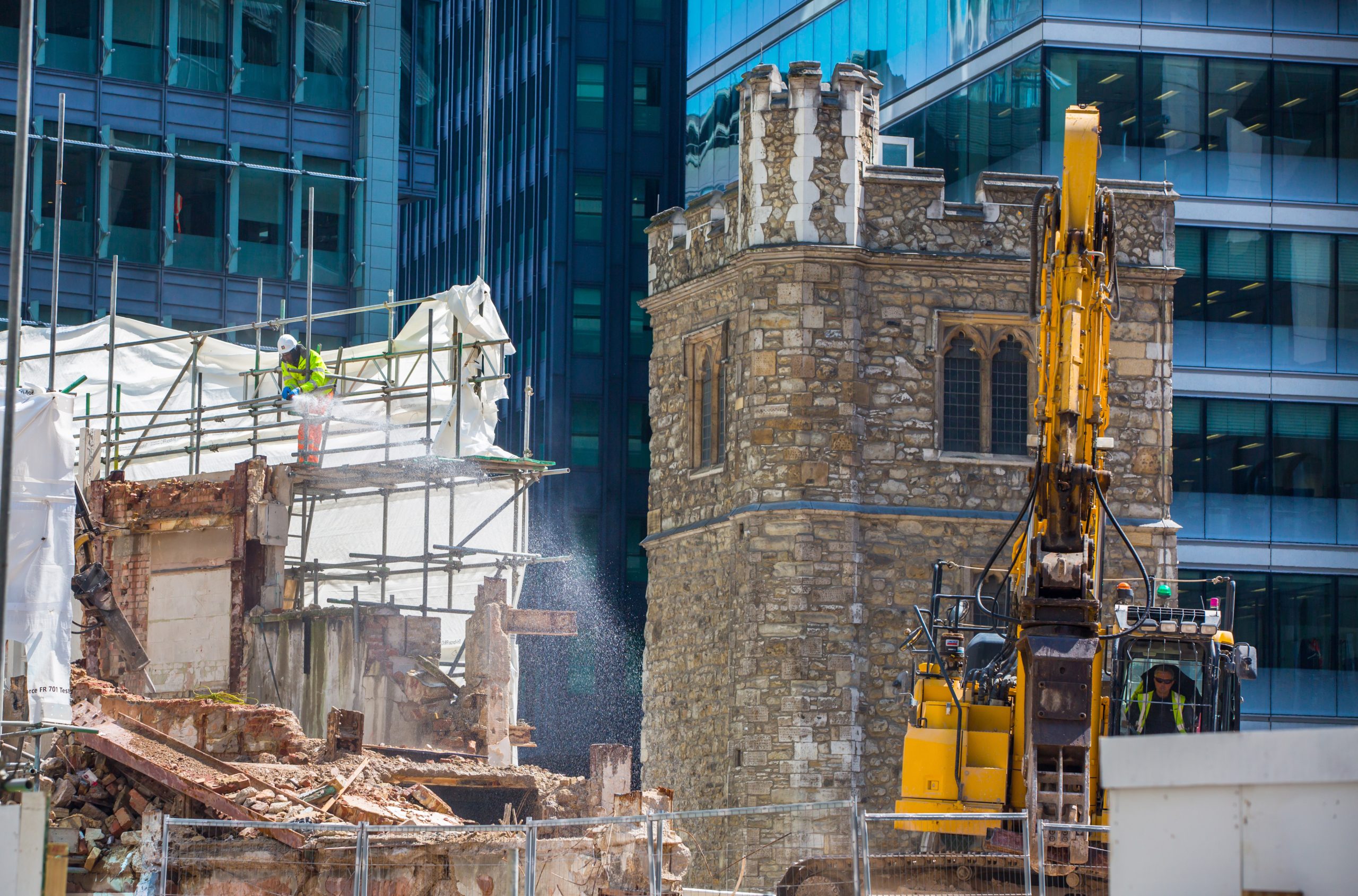Impacts of construction
A good example would be the impact of a new construction project on a surrounding area. A construction company could be building a new urban development between two buildings. The other two buildings might be much older, built of aged materials and in a state of deterioration. The project would need to be monitored as it progressed, to ensure that the new structure does not negatively impact the existing landscape. A deformation survey would be carried out, to detect any movement caused by construction activity, such as piling or other seismic vibrations that could be detrimental to the older, existing buildings.
To carry out the survey, Powers surveyors would attach targets to the existing buildings on either side of the project to monitor movement using laser-scanning technology. The targets would be placed at specific points on the structures and point readings taken for their exact geo-located positions. Powers do this using digital kit such as laser scanners, levels and total stations. Intermittent readings would then update Powers surveyors on any progressive movement and reports on this data could then be submitted to the client to decide what action would need to be taken to protect the surrounding infrastructure. The targets will give the direction and distance of travel of the movement, with the data reported as figures, charts or as graphics.
Tests of time
Another example of deformation monitoring would be to fix precision monitoring equipment onto railways and bridges. Those structures, where vibration and movement could be causing damage, need to be monitored regularly for any degradation of infrastructure. By the nature of their construction, there are stresses and strains on the structure at crucial, supportive points that will need to be watched closely. This will need to be carried out over time, as many factors, not just the traffic volumes or nearby transport routes, will affect it. Fixed position monitoring equipment can deliver real time results over an extended period of time.
Other deformation examples include areas that are experiencing heavy – and unusual – levels of construction traffic. This could be in areas where short-term building projects are being carried out, or where heavy-duty traffic – diggers, loaded trucks – could be operating. The actual construction site needn’t be in the vicinity, but the vehicular activity can be just as damaging. Traffic damage on busy roads is another factor that should be monitored, especially with the largescale increase in traffic on UK roads over the last few years.
Below the surface
Finally, when work is being carried out underground, this can cause structural vibration, undermining and upheaval. Older buildings in a state of disrepair, for instance, can be particularly badly hit by underground activity, such as excavations and tunnelling. Movement that occurs this way can be difficult to spot and so digital monitoring is an accurate, efficient way to keep track of it. Observations can then be reported to make informed decisions about how problems can be addressed and where remedial work or support may need to be carried out.
If you have a large-scale monitoring project that you think may suit a deformation survey or fixed position monitoring project, then we can help. Our experts have a huge amount of experience and knowledge in this field and can advise and guide you through the process. Contact us today.








